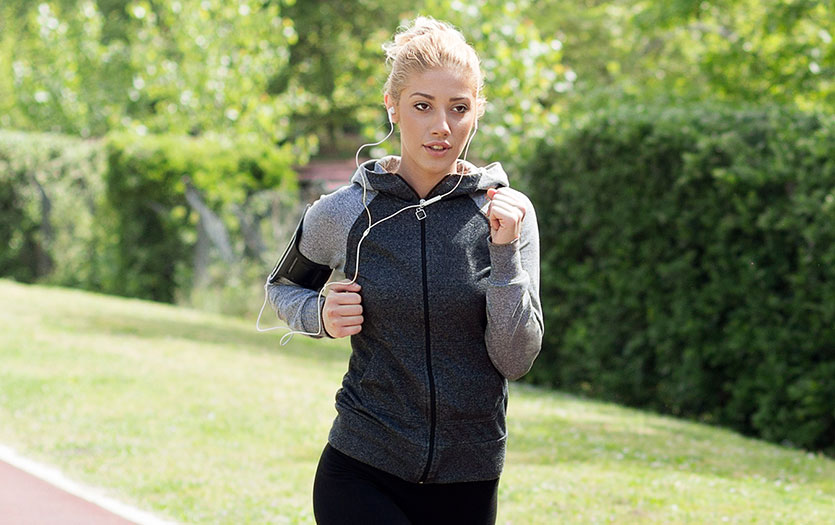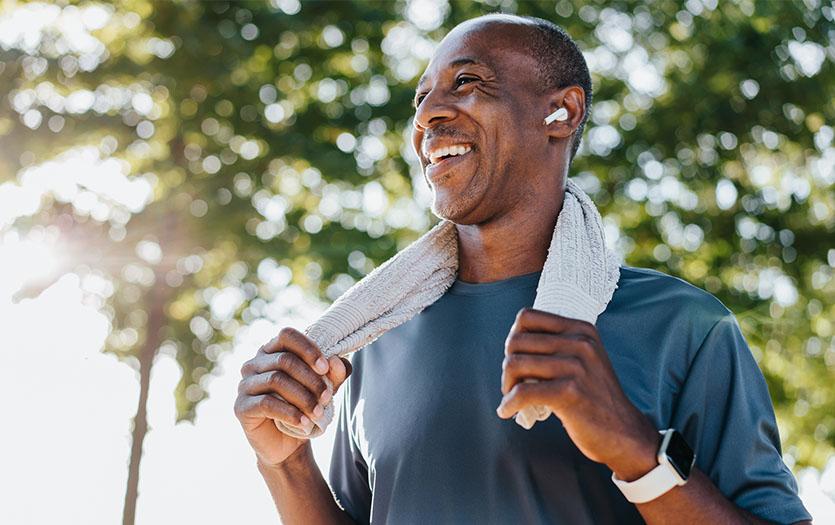
When an athlete contracts COVID-19, it can be difficult for the player and his/her parents to know when it’s safe to resume activity. With this in mind, William Collis, MD, PPG – Cardiology and Joseph Mattox, MD, PPG – Sports Medicine, teamed up to develop important guidance for college athletes, coaches and parents, and define smart return to play parameters for schools who work with Parkview Sports Medicine. The two physicians tell us more.
Why is a COVID-19 diagnosis dangerous in relation to physical activity?
Dr. Collis: Many COVID-19 patients experience myocarditis, which is inflammation of the heart muscle and part of the body’s response to a viral infection. Myocarditis can lead to a potentially serious arrhythmia, which can be exacerbated by physical activity.
What are the risks of returning to activity too soon?
Dr. Collis: Depending on the results of the Covid-19 infection, starting exercise too soon can place undue stress on the cardiac and pulmonary systems.
Do these risks vary by age?
Dr. Collis: It appears that some of the more ominous findings, such as those linked to myocarditis, are more prevalent at advanced ages. It is very uncommon in the pediatric population.
What are cardiologists looking for when evaluating an athlete’s eligibility to return to activity?
Dr. Collis: We are looking at their oxygen saturation, presence of fever, vital signs and an absence of undue fatigue.
What are some signs that an athlete is not ready to return to activity following a COVID-19 diagnosis?
Dr. Collis: Shortness of breath, chest discomfort, malaise or fatigue, or a recurrent fever.
Approximately how long does COVID-19 recovery take?
Dr. Collis: A lot depends on the severity of their symptoms. In a relatively asymptomatic patient, after a rest period of 10-14 days, the athlete could begin returning to activity in an observed, graded fashion; however, if an athlete develops myocarditis, he/she might need to refrain from athletic activity for up to six months.
Implementing return to play protocol
How are the Parkview Heart Institute (PHI) and Parkview Sports Medicine (PSM) collaborating on the return to play protocol?
Dr. Mattox: Thankfully, PSM has a partner in PPG – Cardiology and specifically with Dr. Collis. Dr. Collis reviewed recommendations based on current evidence and helped us shape a plan for any athletes at one of our universities who tests positive for COVID-19.
How was the PSM return to play process developed?
Dr. Mattox: The current process at PSM for college student/athletes started well before the school year. During the summer, I was active with Parkview Health in helping get our partnered schools back to school and back to sport. During this time, our No. 1 priority has been the well-being of our students, teachers, administrators, coaches and staff. In reviewing the most recent information on COVID-19, cardiac myocarditis (inflammation of the heart muscle) surfaced as a concern post-COVID infection.
What does the return to play protocol look like?
Dr. Mattox: Our schools regularly test student-athletes based on the requirements of either their governing bodies or local health officials. Once an athlete is found to be positive, they are screened for symptoms and severity of illness. If medical intervention is indicated, then the parties involved take appropriate measures. If an athlete is asymptomatic or displaying minor symptoms, they are placed in quarantine and the school performs contact tracing.
Once an athlete’s quarantine time is complete, an EKG and cardiac echo are performed prior to any return to training. Athletes are made aware of cardiac symptoms to watch for including: chest pain, rapid or abnormal heart rhythms, shortness of breath, fluid retention or swelling of the legs, ankles or feet, and fatigue.
Dr. Collis performs the cardiac echo on every COVID-positive athlete. When Dr. Collis has given cardiac clearance, I then meet with the athlete in the training room to begin graded Return to Play under the guidance of our athletic trainers.
How did you come up with the structure for the graduated return to play protocol?
Dr. Mattox: The basis of our graduated return to play guidelines are structured after the British Journal of Sports Medicine Infographic: Graduated return to play following covid-19 infection.
Stage 1: Quarantine, rest, allow recovery from acute viral illness.
Stage 2: Light activity – This would include jogging, stationary cycle. Goal at this stage was to stay <70% maximum heart rate for 15 minutes. This stage will typically last two days. The goal is to increase heart rate. (While exercising the athletic trainer monitors for development of symptoms during all stages.)
Stage 3: Simple movement activities – running drills, <80% maximal heart rate for 30 minutes, and monitoring for symptoms. The objective to increase the load gradually and manage any post-viral fatigue symptoms.
Stage 3A: More complex training activities – <80% maximal heart rate for 45 minutes. The objective is exercise coordination and skills.
Stage 4: Normal training activities for patient's sport – <80% maximal heart rate for 60 minutes. The objective is to restore confidence and assess functional skills.
Stage 5: Resume normal training progression. No limit on heart rate. Continue to monitor for symptoms listed.
Stage 6: Return to competition based on sport-specific guidelines.
Why is the gradual reintroduction so important?
Dr. Mattox: As with return to play from any illness or offseason, when returning from COVID-19, there must be an acclimatization period for the athlete’s safety. PSM athletic trainers at the universities work with athletes over approximately one week to get the athletes back to sport and able to compete safely. We have an algorithm to follow, but each athlete is treated individually based on their severity of illness and ability to progress and not develop symptoms. This is another crucial example of the importance of having athletic trainers available to provide one-on-one care to each COVID-positive athlete.
How does this protocol benefit local athletes?
Dr. Mattox: This entire process was developed by PSM and PPG – Cardiology to place the post-COVID athlete at the least amount of risk based on the most current medical data available. The universities that PSM partners with, not only get the services of PSM, but also benefit from the expertise within the entire Parkview health system.
Will this protocol evolve as we learn more about COVID-19?
Dr. Collis: Please realize this is a new virus with complications that we have not seen with other predominantly respiratory tract viruses. We are still in the infancy as far as our knowledge about the long-term effects of the virus. Our return to play guidelines just recently changed and will likely need to be amended in the future as our experience in treating Covid-19 grows.



